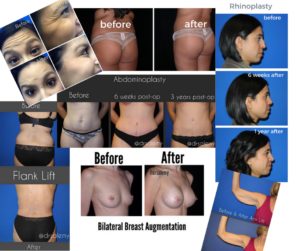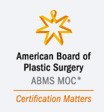

Tips for Looking at Before and After Photos
When beginning a search for available options in cosmetic procedures and doctors, Seattle-based plastic surgeon, Dr. Shahram Salemy, recommends taking a look at the before and after photos in a surgeon’s photo gallery. These photos can tell you a lot about the skill and experience of a surgeon, as well as give you a better idea of what to expect from your own procedure. Here are a few tips on what to pay attention to as you browse through these photos:
Look for Before Pics That Are Similar to You
Because every person’s body is different, no two cosmetic procedures will turn out exactly the same. Even so, try to look for before photos that feature someone whose natural body is similar to yours in age, gender, weight, height and, particularly, in build. This can give you a better idea of how the same operation may turn out on your body and what to realistically expect. For example, for breast augmentations, the size and shape of a person’s rib cage will affect how the breasts rest on the chest, so looking at someone whose physical anatomy mirrors yours will help you visualize the same procedure on yourself.
Check for Surgery Quality
Although plastic surgery procedures will be different for every person, there should be a consistency in the quality of each procedure a surgeon performs. No matter which cosmetic surgery you’re interested in, good practice and quality results should be evident in the photo gallery. There should be symmetry in the final results, with minimal visible scarring, and an after photo that retains a natural look. There should be no bubbling or rippling effects, unnatural positioning, or signs of poor healing after the recovery period.
Take Note of the Photo Date
Concerning the recovery period, it is also important to pay attention to the dates in plastic surgery before and after photos. Generally, there will be a caption stating how much time has elapsed between the surgery and the after photo, and this should be taken into consideration when evaluating cosmetic surgery photo results. Photos taken only a month after surgery may still show signs of swelling and redness, but photos taken six months or more can give you a better idea of the long-term results.
Pay Attention to Consistency in Photo Quality
Lastly, you should take note of consistency in the photographs themselves, as well as the procedures. Are the photos all taken from the same angles, from subject to subject? Do they use the same kind of lighting? Are all of the photos in focus? A cosmetic surgeon with nothing to hide won’t employ any photographic tricks to obscure mistakes or unpleasant results.
With these tips in mind, you’ll be able to better evaluate a surgeon’s portfolio and decide which procedures might be best for you. Never hesitate to request a consultation, where you can also ask to view photographs kept in the office and ask more focused questions. You can use these photos to aid in communication between you and your surgeon, to help figure out what your ideal vision is and what would best suit your needs.















